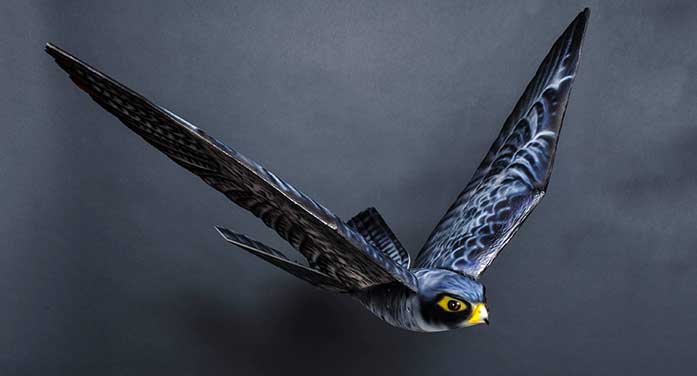Birds will be more protected from landing at oilsands sites through a new research project involving University of Alberta computing scientists and Aerium Analytics, a drone technology company.
Working with Imperial Oil Ltd., the researchers will fully automate tracking tools to better detect and deter birds from touching down and nesting on industrial areas like tailings ponds.
“Our remote-sensing research will fundamentally elevate the technology to the next level of monitoring, measuring and protection, with industrial validation,” said lead researcher Irene Cheng, a professor in the Faculty of Science.
The project received $1 million in funding through the Clean Resource Innovation Network (CRIN) Digital Oil and Gas Technology Competition. The competition fosters technology solutions for Canada’s oil and gas industry to improve environmental protection, operation performance and business competitiveness.
Cheng and several graduate students in the U of A’s Multimedia Research Centre, based in the Department of Computing Science, will be working on the project until 2024.
Building on the centre’s existing research, the students will develop algorithms and other AI tools to be used for target object monitoring on the RoBird, a patented drone Aerium Analytics is already using to help industry clients with bird deterrence.
The software developed by Aerium Analytics and supported by Cheng and her team will help the RoBird automatically identify, count, track and report on birds coming into an area.
“Our RoBird and AI provide more data and details to help resource companies increase their effective management of at-risk bird populations,” said Jordan Cicoria, president of Aerium Analytics.
“It also effectively reduces the need for human operation and intervention which in turn cuts down safety risk, on-site vehicle use and carbon emissions.”
The technology will eventually be adapted for use with other wildlife, he added.
The software will be tested and validated by the Calgary-based company, then ultimately used in the work they perform and deliver to their clients.
The research Cheng and her team are conducting lets Aerium Analytics stay on top of a constantly evolving field, Cicoria noted.
“Their work allows us to better advance where we are going with our software development and allows us to very quickly apply that to our existing processes.”
As well, by working with real-world datasets provided by companies like Aerium Analytics, the students working on the project get in-demand skills, Cheng noted.
“They’re challenged to become problem solvers – to develop industry-focused techniques that can apply to other applications. That very solid training makes them professionally mobile.”
Aerium Analytics has worked with Cheng and the Multimedia Research Centre on a handful of other projects since 2019, resulting in some internships and even a job for one of the students.
Cicoria is optimistic the CRIN project will ultimately create five or six new internships or company jobs within the next two years. Strengthened by high-tech research like that at the U of A, he’s also hopeful his company’s overall growth will create 50 to 100 jobs over the next five years.
“As remote sensing technology advances, there’s a whole system of research growth around it, including multi-sensor data fusion, integrated machine learning and computer vision analytics,” he said.
“The CRIN project is a great example of building a bridge between academia and industry,” added Cheng.
“To connect with small and medium-sized companies such as Aerium Analytics is important; they’re the economic backbone of Canada.”
| By Bev Betkowski
Submitted by the University of Alberta’s Folio online magazine. The University of Alberta is a Troy Media Editorial Content Provider Partner.
© Troy Media
Troy Media is an editorial content provider to media outlets and its own hosted community news outlets across Canada.



